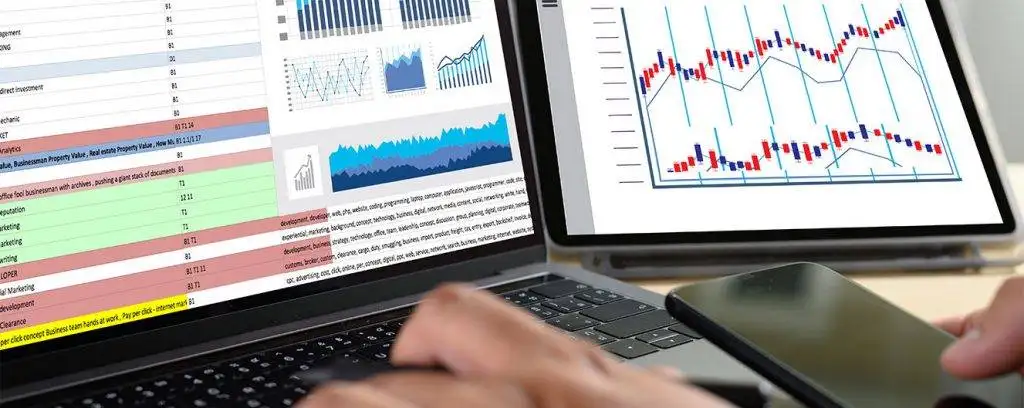Since the launch of google maps as a chart type in 2020, there has always been speculation on effectively using Google Map in Google Data Studio for eCommerce geographic data. Before bombarding our minds with complex questions and data, lets us first understand the significance of google maps.
Understanding Google Maps:
Google data studio consists of a map-style visual art called google maps that provide various data according to the specific geographic location selected. Primarily, geographical maps indicate conversions, traffic, revenue, leads, and other metrics based on the end-user. With google data studio, and e-commerce geographic data can be identified by the trend flow in specific geographical locations. With geo maps and the geospatial data provided in the data studio, businesses can run more efficiently by creating powerful strategies and understanding the geography of a location, and planning for the future accordingly.
What are the dimensions in Google Maps?
The dimensions on google maps with google data studio with reference to a specific continent, country, state, or city. Based on the product and the business services, the dimensions on geospatial data with concerning the targeted audiences should be chosen. For example, if an individual is running a small-chain business such as fast-food delivery, the geographical data should focus on the business’s specific locality. Whereas, if a multi-national corporation is involved, the geographical data should be focused worldwide. With google data studio, business firms are provided with the ability to drill down specific geo dimensions. With all the dimension benefits mentioned above, using Google Map in Google Data Studio for eCommerce geographic data is a promising step in effectively building and reaching out to different sets of target audiences.
Available metrics in Google Maps:
Regardless of scope, there are various metrics available in google maps. Usually, the report specify metrics in the geographical data are goals, sessions, users, e-commerce, etc. With the specifications offered by google data studio, geographic data can be marked on the maps using bubbles to differentiate the metrics. The bubbles are used to view product values in a specific e-commerce geographic location. For example, to view the report of high sales of a product in a geo map, the bubbles are used to indicate the specified metrics. The bigger the bubbles, the more the sales of the particular product. This method is commonly used to identify the target audience by geographic location.
In-depth view of Google Maps in Google Data Studio:

Considering and using google maps in the analysts’ toolkit is a mandatory and versatile feature to improve a business. Geospatial data and relationships can be highlighted with the help of google maps for more efficient work. By the above specifications, a business firm or an organization can understand the patterns in their data with geographic regions and landmarks. The google data studio enables users to overlay any data directly on geo maps to achieve a detailed geographic report.
Currently, the google data studio offers two types of google map charts — Bubble map and Filled map. The difference between a filled map and a bubble map is that the bubble map allows users to point plot data such as coordinates, longitude, latitude, and address. On the other hand, a filled map will enable users to plot data according to geographic specifics such as continent, country, zip code, etc.
These maps are essential factors in providing functionality features in geo maps, such as pan-and-zoom, satellite view, and street view, without interrupting the user’s data studio reports and analysis. Using Google Map in Google Data Studio for eCommerce geographic data unlocks both these map features from google data studio to ensure a detailed flow of understanding and easy accessibility of google maps.
Use Google Map in Google Data Studio for eCommerce Geographic Data
There are Google Data Studio templates available for creating eCommerce reports. Also you can use custom JavaScript visualization in Google data studio. There are filled map and bubble map options for visualization geographic data to your report in Google data studio.
1. Significance of filled map:
Using a filled area map allows users to apply distinctive colors based on countries, states, and cities. For example, to identify the highest amount of traffic towards their product, a business firm or an organization operating in the United States can differentiate them based on different geographic states in the country and color them based on their products’ sales. This allows them to target more remote areas and wider their target audiences. Another excellent feature that is offered by Google data studio is to use a filled map and differentiate regions other than the country itself.

In countries like the United States and Canada, there are a lot of states and provinces. Identifying based on the region in google maps can make a massive difference in understanding a company or an organization’s data flow. If a company or an organization insists to view based on cities, the filled map has a feature for that too. By viewing cities, suburbs, and towns on the Filled map, the geospatial data can determine the volume of the metric.
2. Significance of a bubble map:
Accessing the bubble map feature with google data studio is considered the fastest and easiest way to discover trends. Bubble maps enable the user to identify trends by creating different sized circles according to the given database. Each ring and the size of the ring determine the value of the metric data in the specific location. To be more precise, the larger the bubble in the google map in a particular area, the higher the value or sales of the business in that specific locality. Some of the advantages of a bubble map are: –
- Each bubble on the google map corresponds to the report and analysis of the specific geographic data.
- Bubble maps help users to summarize different-sized geographic regions, zip codes, etc.
- Bubble maps enable users to customize the icons and colors with google data studio and also provide visual sales revenue based on high and low performing areas.
Big companies and organizations are switching to this type of map feature in google maps as holding onto a large amount of data in a spreadsheet may prove harder to work efficiently. Using Google Map in Google Data Studio for eCommerce geographic data also enables users to customize their bubble maps according to the style and format icons the data studio provides.
Google Maps vs Geo Maps in Google Data Studio

People often get confused with the uses and functions of google maps and use geo maps. When it comes to google data studio, geo maps are the first maps that came into functionality. Some of the uses and advantages provided by a geo map are:
- Data of a specific geographic location can be displayed as bubble or choropleth map designs.
- Geo map helps users narrow their searches by drilling deep from continents to subcontinents, countries, regions, towns/cities. However, some of the features that geo maps offer is available in the US as of now.
- Geo maps allow users to use optional metrics to favor the e-commerce database.
- An additional feature includes enabling embedded reports on geo maps.
On the other hand, here are some of the uses and advantages of google maps in reference to google data studio:
- Google maps allow users to be more specific in their searches by enabling two map features called the bubble and filled map.
- When zooming in on google maps, cities and towns are more evidently shown to the user when compared to geo maps.
- Google map complements visualization color pallet by enabling users to customize the colors of the map. It consists of different themes such as standard, silver, retro, dark, night, and aubergine.
- According to geo maps in the google data studio, it can favor up to five thousand rows of specific geographical data. Whereas, google maps can favor and display up to ten thousand rows of data.
- One of the best features of google maps is that a user can view both street and satellite images of a specified location.
With the given pros and cons of both geo maps and google maps, it is evident that using Google Map in Google Data Studio for eCommerce geographic data is the best option compared to using geo map for e-commerce geographic data.
Customizing and creating Google Map in Google Data Studio:
With google data studio, a user can create and customize google maps for beneficial effects in the long run. Customizations of geographic information system enable users to narrow down and identify more features and visual pallets. As of now, there are three significant styles available on google maps — silver, standard and dark. The customization also includes filtering labels, landmarks, and roads that are visible on the map. Different platform styling wizards help users to understand the map in-detailed. These include silver, retro, dark, night, and aubergine. Users can also highlight different roads, parks, public places to concentrate on a specific geographical location and separating it from the rest. Once all the customizations and styles are made on the map with the user preferences, the user can then upload it to the data studio for reporting. Any kind of database can be added to the google map, thus resulting in more favorable access to the users.




